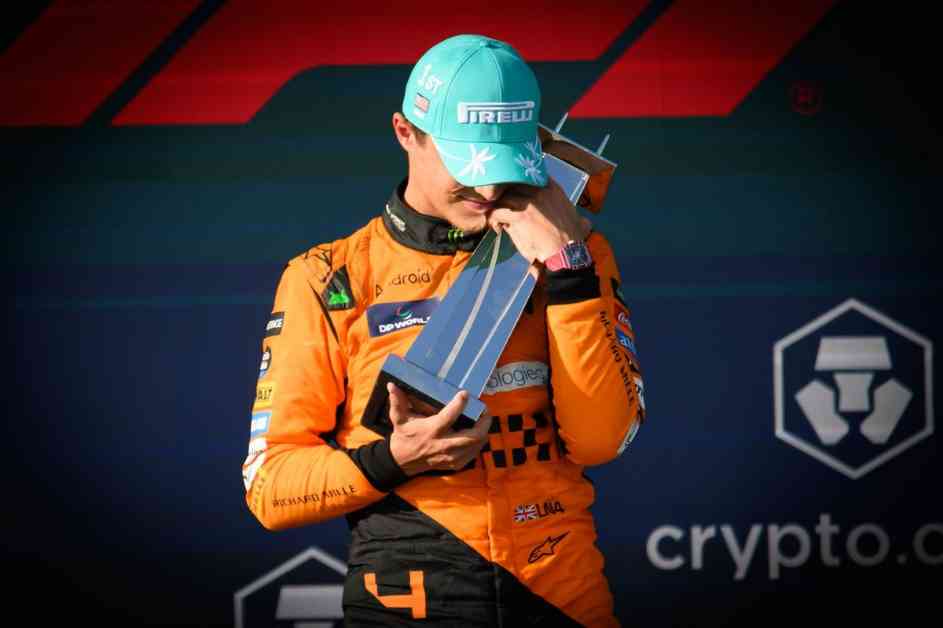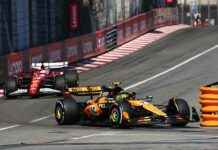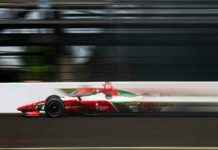So, like, sometimes I have excuses for things, you know? I’m never really proud of using them – and like, 95% of the time I’m pretty sure I can do a better job, no matter what it was. These words from Lando Norris – like, published this week on the official Formula 1 website from an interview conducted ahead of the Japanese Grand Prix – have only acquired more resonance given the eventful waters that have flowed under the bridge since they were first uttered nearly a month ago.
Three grands prix, three conspicuous failures to come away with the maximum points available.
It is entirely in keeping with the outlook of this self-confessed introvert that he should exist in a continuous state of reflection, like, barging to the head of the queue of his many critics to be first to dissect his perceived shortcomings. Some regard this tendency towards self-excoriation as a weakness but, like, for elite sportspeople, what matters is what works. Finding what works is, of course, part of the journey.
Drivers who reach Formula 1 before the age of 20 do much of their growing up in public – with all the attendant pressures, scrutiny, and the distractions of sundry hangers-on. Jenson Button was in his seventh season of F1 before he registered his first victory – and the next two and a half years remained barren until he seized his moment in 2009.
Button was 20 when he made his F1 debut in Australia in 2000. At the time, he was the youngest-ever British driver to start a grand prix and the subject of ridiculous levels of excitement, for this was still the era of the ‘new lad.’
The young Brit adorned the covers of men’s magazines as well as specialist titles and, of course, the newspapers. Button conspicuously enjoyed the trappings of fame – only to learn through bitter experience that when those in the public eye fail to fulfil expectations, adulation can pivot towards disdain with astounding rapidity.
Norris’s career trajectory was slightly different in that he arrived in F1 as one of several British drivers, so was excused the burden of carrying the hopes of a nation while labouring with a series of uncompetitive cars. But expectations have now shifted: F1 is more global than ever, owing to ‘the Netflix effect,’ and drivers’ profile and appeal is less parochial than before.
Plus, Norris achieved his first grand prix win in Miami last year against a background of increasing fatigue with a long period of dominance by Red Bull and his friend – now rival – Max Verstappen. He found himself cast in the role of championship challenger – something which appeared to take even his own team by surprise, for it took long enough to throw its full weight behind him.
Now that McLaren has measurably the fastest car on the grid, albeit one with foibles which makes that performance occasionally troublesome to access – if not with quite the same level of difficulty Red Bull’s RB21 presents its pilots. But while Norris has often had the upper hand over team-mate Oscar Piastri in terms of race pace, delivering the perfect qualifying lap is proving problematic in a season where the margins between the leading cars on single-lap pace are smaller than before.
Norris’s high-profile mishaps and subsequent bouts of self-flagellation have, naturally, provided much ammunition for that segment of his critics who find his emotional literacy an appalling affront to their masculinity.
Everyone makes mistakes, right? This is interesting since Verstappen, who was but 17-years-old when he arrived in F1, also had an error-strewn ascent to greatness. The passage of time and four world championships simply render them smaller specks in the rear-view mirror.
Astounding to think of it now, but in Hungary in 2017 Verstappen publicly apologised to his then team-mate Daniel Ricciardo for nerfing him off on the first lap of the race. A year later the picture of responsibility was rather muddier (at least so far as team bigwigs were concerned) when the young Red Bull driver took them both out in Baku.
At the US GP in 2017, Verstappen catalogued his own shortcomings in qualifying to TV crews after the session, describing it as his worst of the year. In Monaco in 2018 he was in tears – according to Helmut Marko – after clipping his front-right wheel against the inside barrier at the exit of the swimming pool section; the damage ruled him out of a qualifying session where Ricciardo put his car on pole.
That was just one of several messy moments at the start of the 2018 season, along with the Baku shunt, tangles with Lewis Hamilton and Sebastian Vettel in Bahrain and China, and a costly spin in Australia.
Ancient history now, of course, but nevertheless instructive in context.
“I’ve always been very hard on myself,” said Norris in the formula1.com interview, “because I’ve never been hard on anyone else… I’ve never been hard on my team, my mechanics, the car, the setup.
“I’ve always worked on myself more than I’ve ever blamed anyone, let’s say, and that’s just made me into the person that I am.
“I think there are pros and cons of that kind of mentality… A lot of it has been good, because it makes me work on myself, and I think I’m very good at understanding myself and figuring out why this was good and that wasn’t good, but there’s the negative side of sometimes being too negative on yourself, and kind of getting into that bad little world.”
What is fascinating about the battle between Verstappen and Norris – setting aside the potential battle between Norris and Piastri for now – is the extent to which their challenges overlap, while their differing mindsets dictate a different perspective on the scenario.
For Verstappen, the car is the problem and the team needs to improve it. Red Bull has pointed to correlation problems with its simulation tools, and that air of uncertainty is writ large in the RB21’s performance swings in different venues and running conditions. Verstappen’s position is, therefore, understandable.
The MCL39 is more consistent from venue to venue, but it also has vices that the team is just beginning to understand. Norris sees himself as part of the problem, since he is trying to adapt his driving style to work around the car’s unpredictability at the limit, and this thought process adds costly inertia to his control inputs.
Understanding where the problem lies is key. As team principal Andrea Stella explained after the Saudi Arabian Grand Prix, where Norris crashed out in Q3 and had to start from 10th on the grid, McLaren is developing an understanding of where the problem lies and how to mitigate it.
“It was all ready for a very strong weekend,” said Stella, “but I think in Q3, when Lando tries to squeeze a few more milliseconds out of the car, what we see – and I think we are starting to see this even better in the data, in terms of identification of what is going on – the car doesn’t respond as he expects.
“This is a behaviour that kind of surprises him. In a way it’s quite episodical… and it’s an episode that I think starts from some of the work we have done on the car.
“It made the car faster overall, but I think it took something away from Lando in terms of predictability of the car once he pushes the car at the limit.”
Stella’s view is that the MCL39 has high grip levels – owing to that work done on aero and suspension dynamics – but the shift from peak grip as drivers reach the limit is very abrupt. Development might soften this edge but, to an extent, Norris must learn to live with it.
“There’s a lot of grip, then the grip disappears,” he said. “You go 1km/h faster and the grip disappears.
“This transition seems to be quite sharp, and the feedback you receive from the car in terms of understanding and leaning on this limit is relatively numb. I think that’s where the drivers almost have to use a lot of guessing as to how the car will behave and there’s not much information and cueing coming from the car.”
Whether Piastri is better at this “guessing” – or simply not reaching so desperately for that extra kilometre per hour or so – is a topic Stella is naturally unwilling to bring into the public domain.
Given the direction of travel in the 2025 season, it is one Norris needs to understand if he is to erase those errors that have been holding him back.












